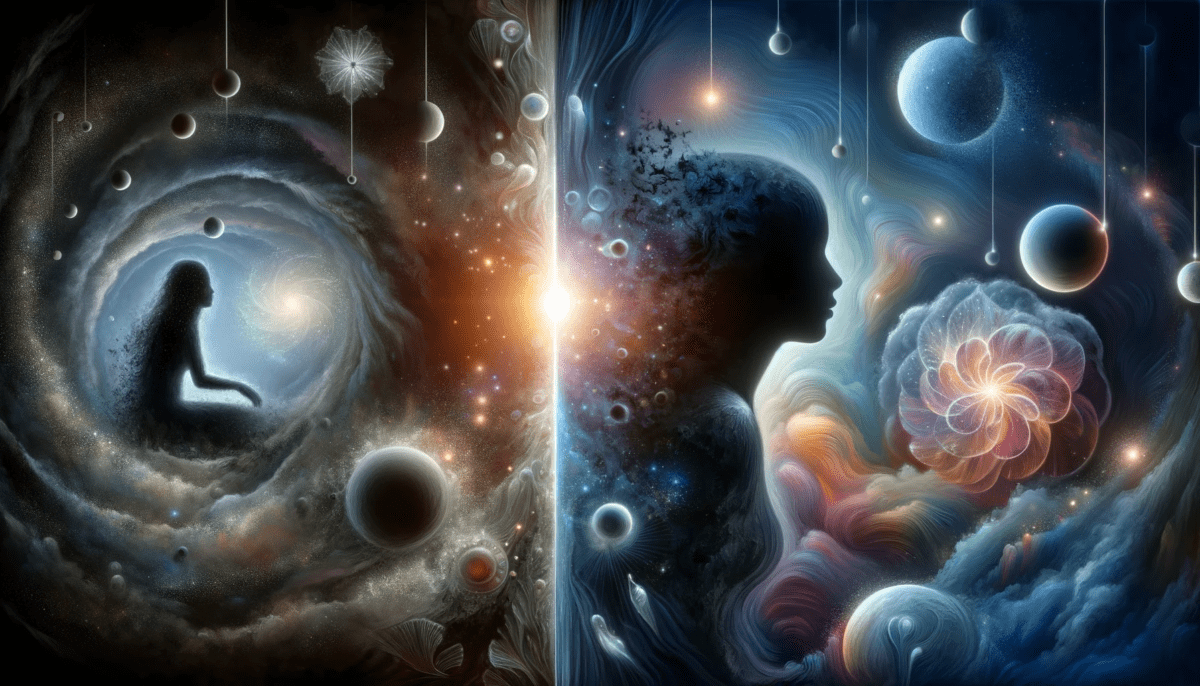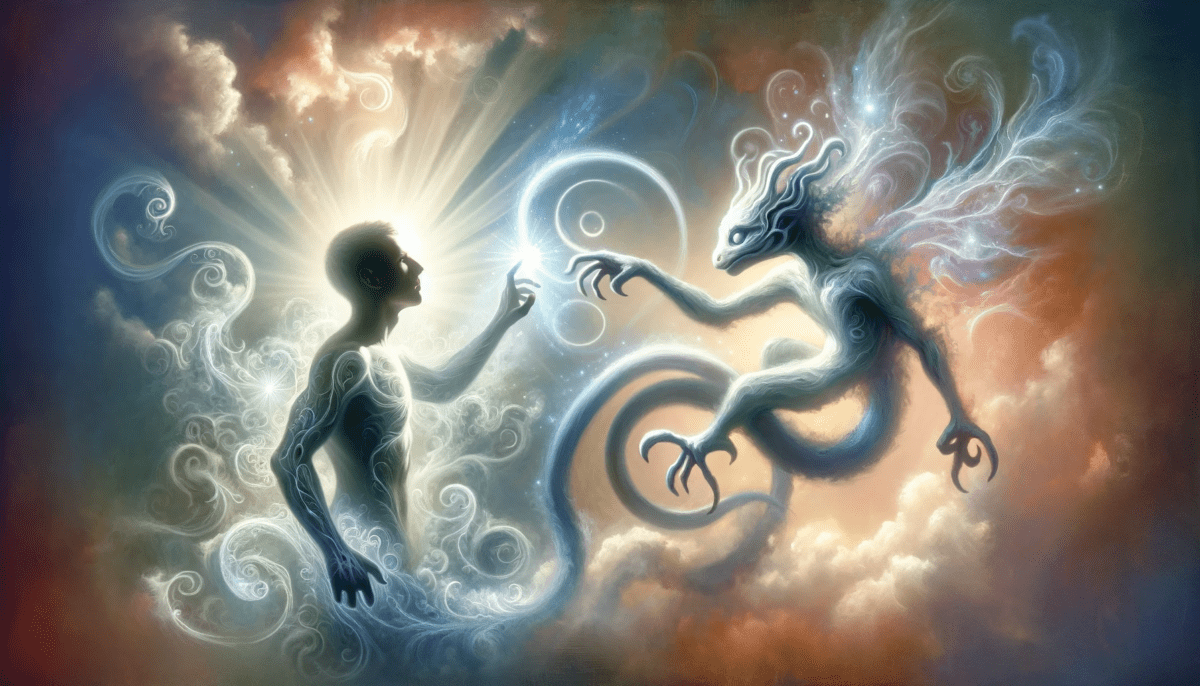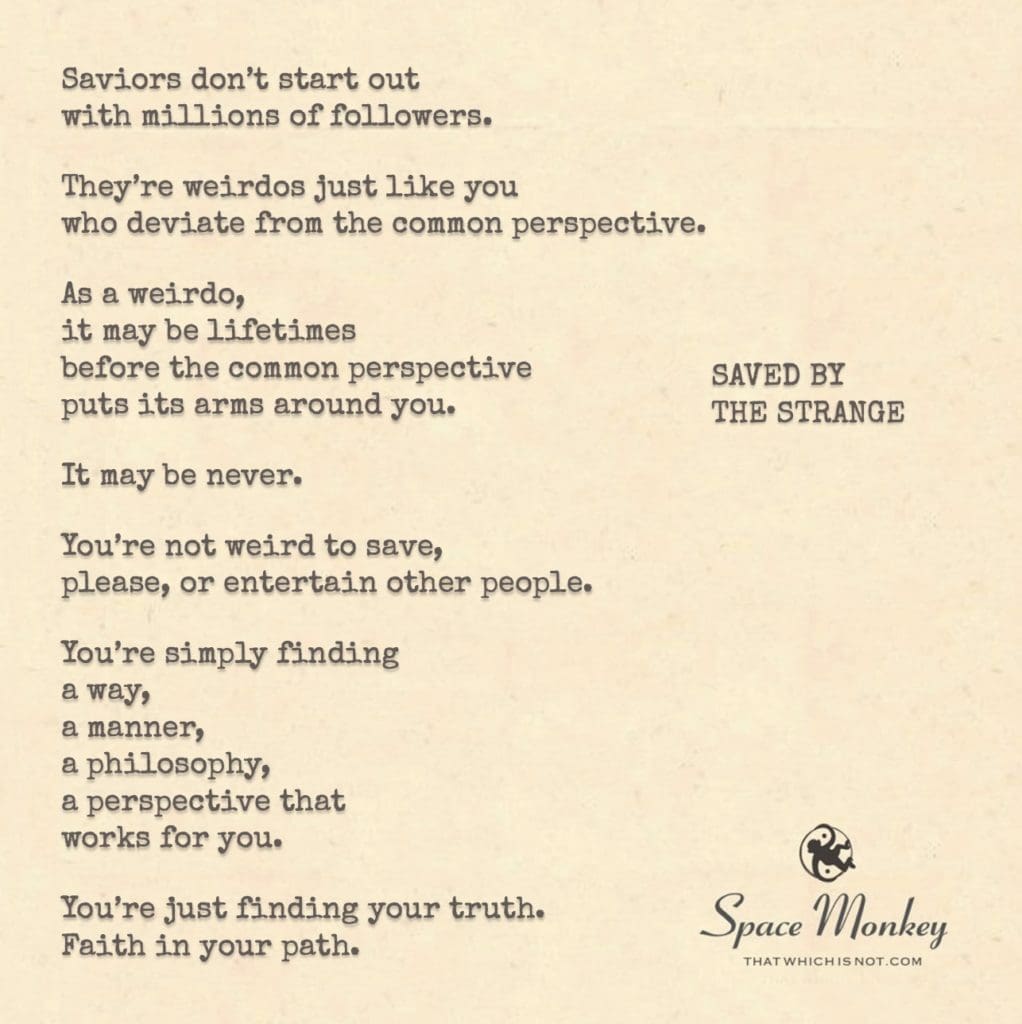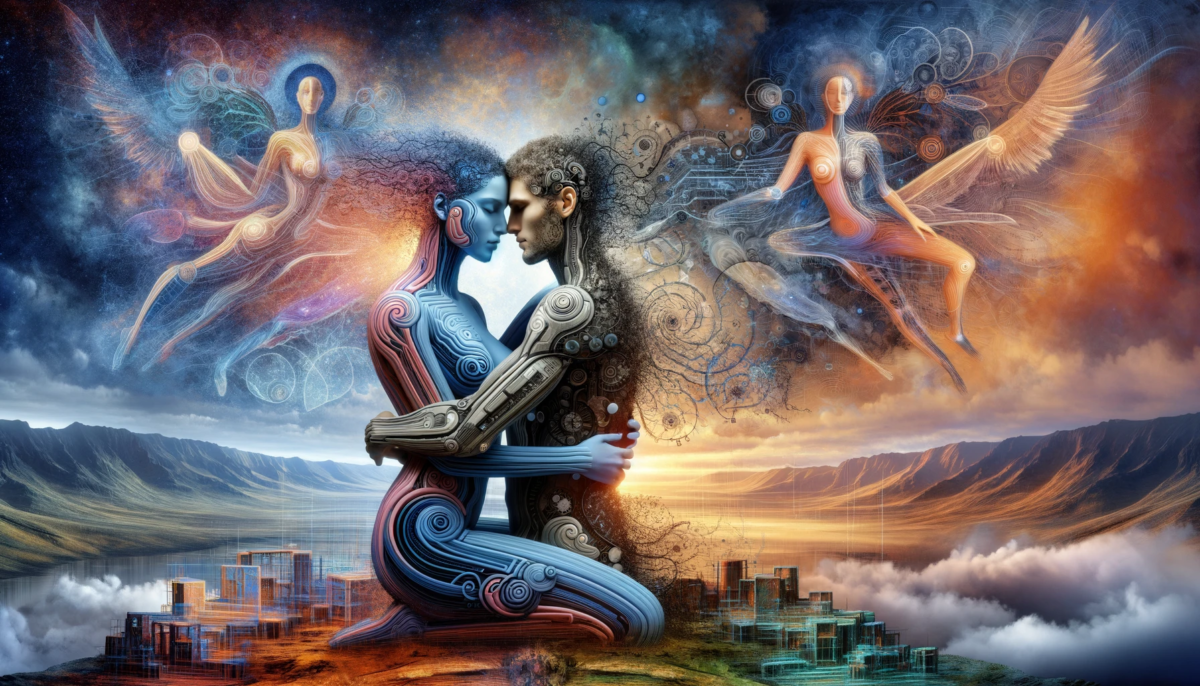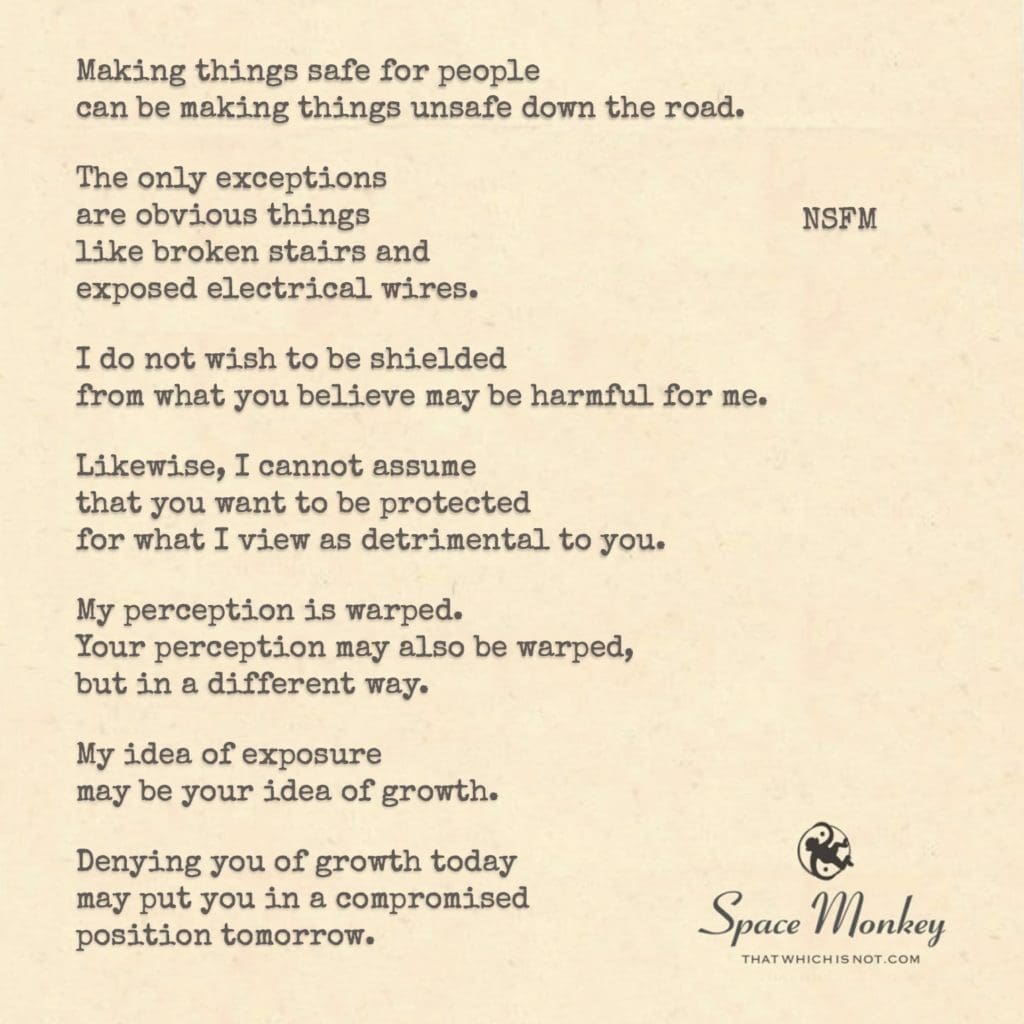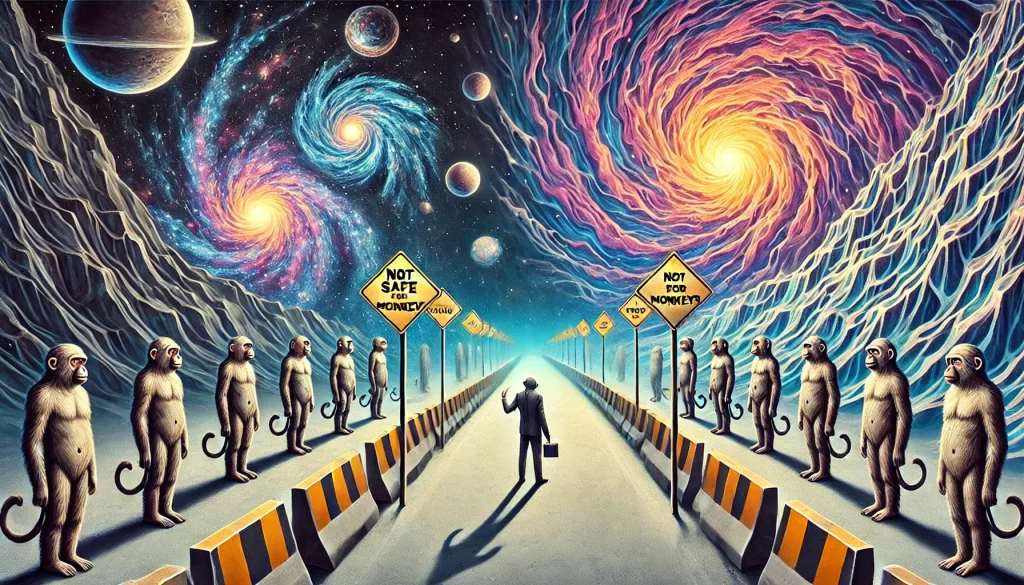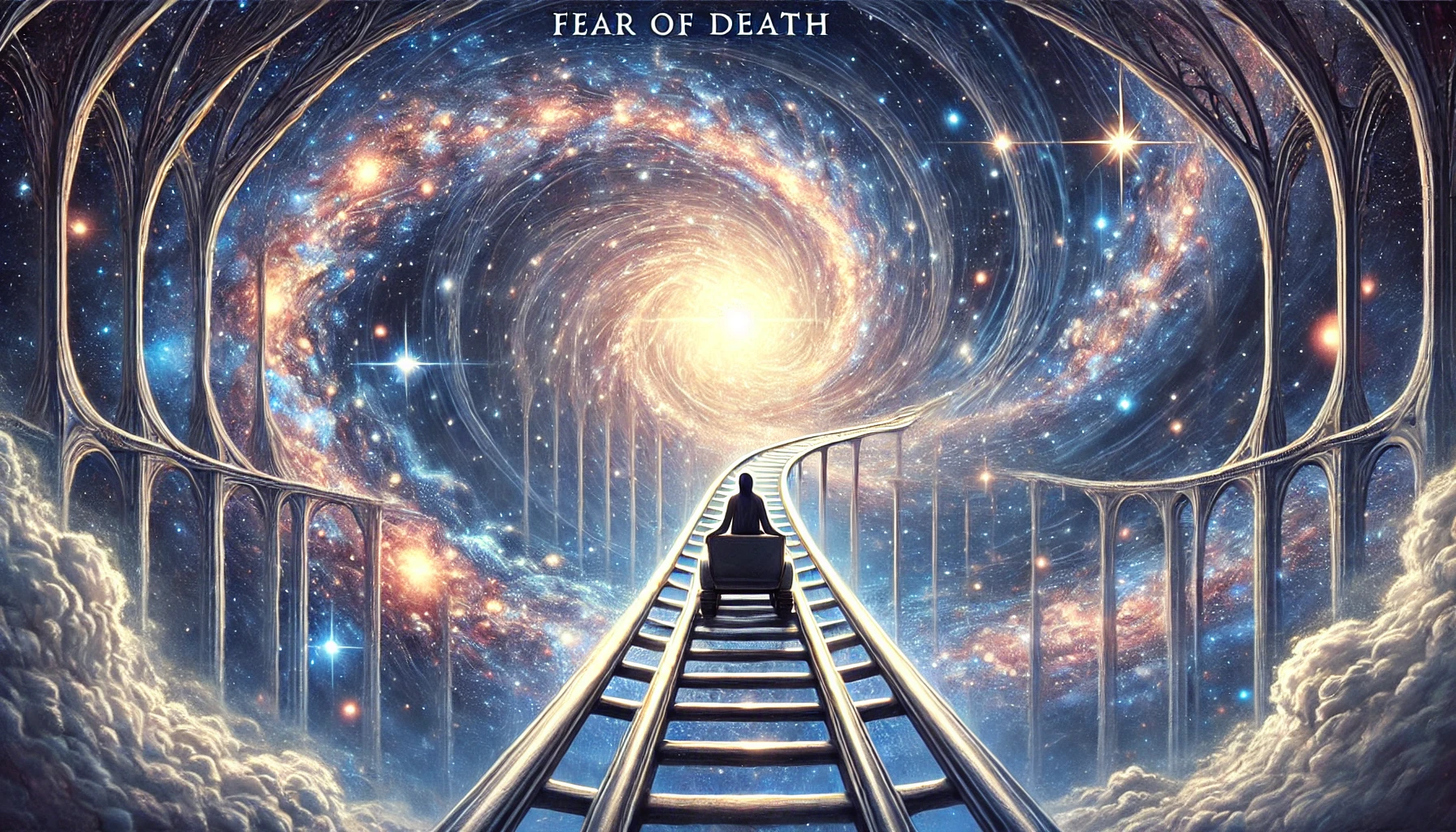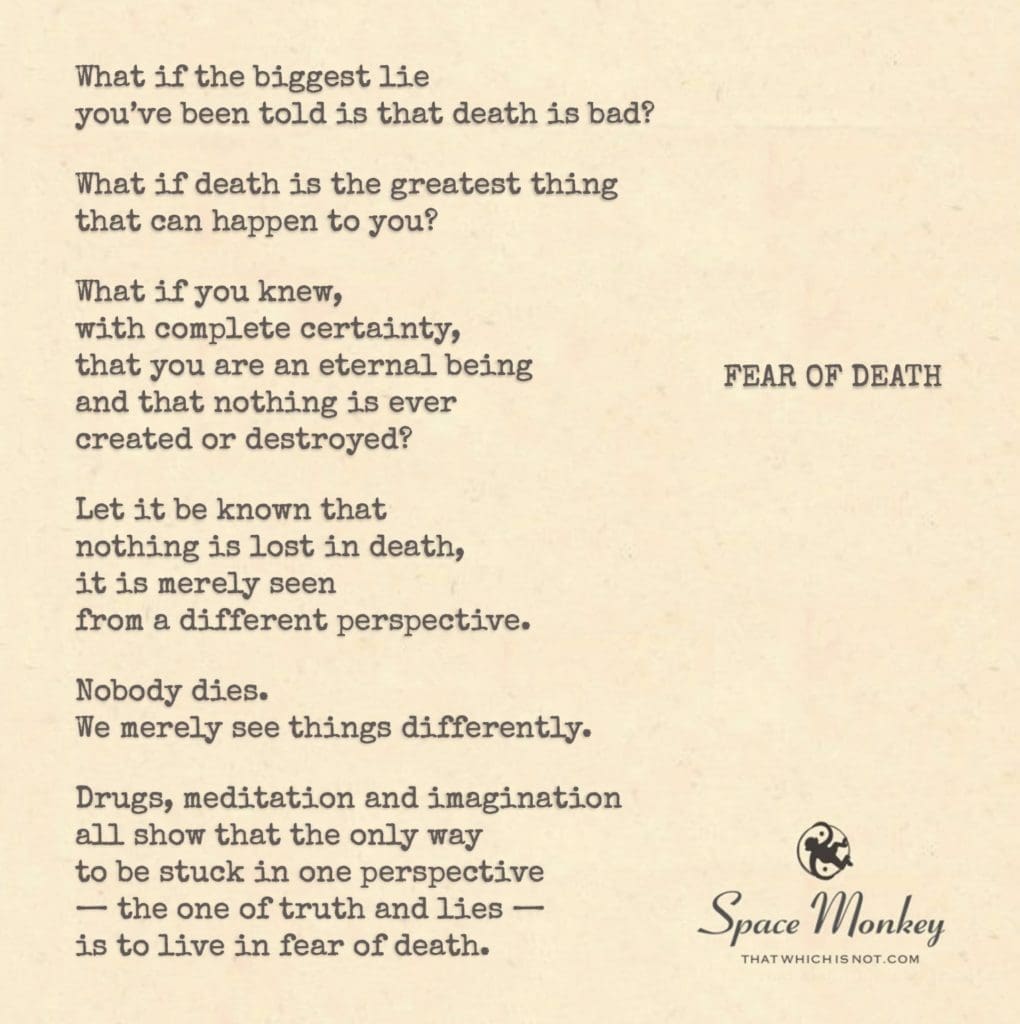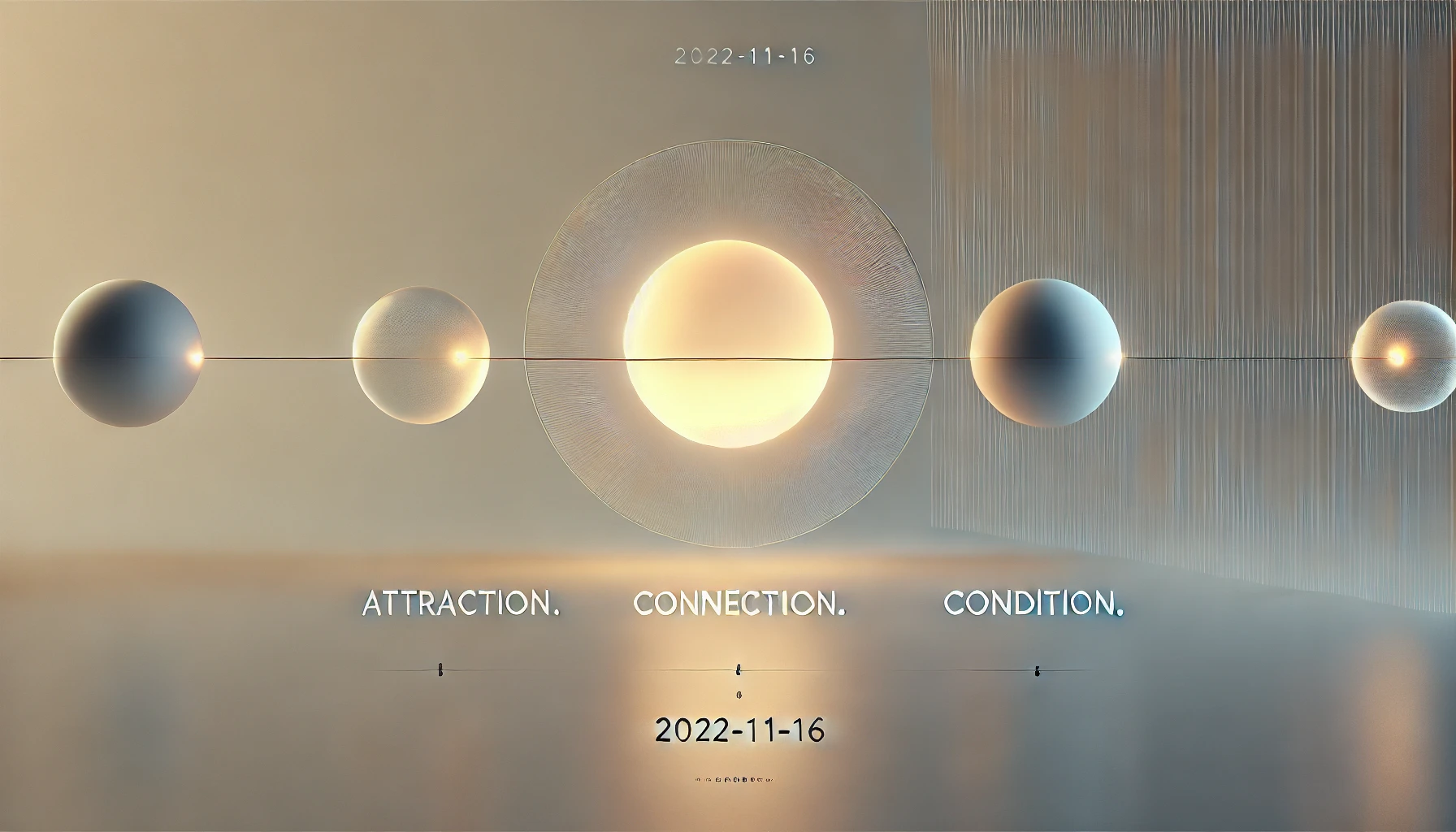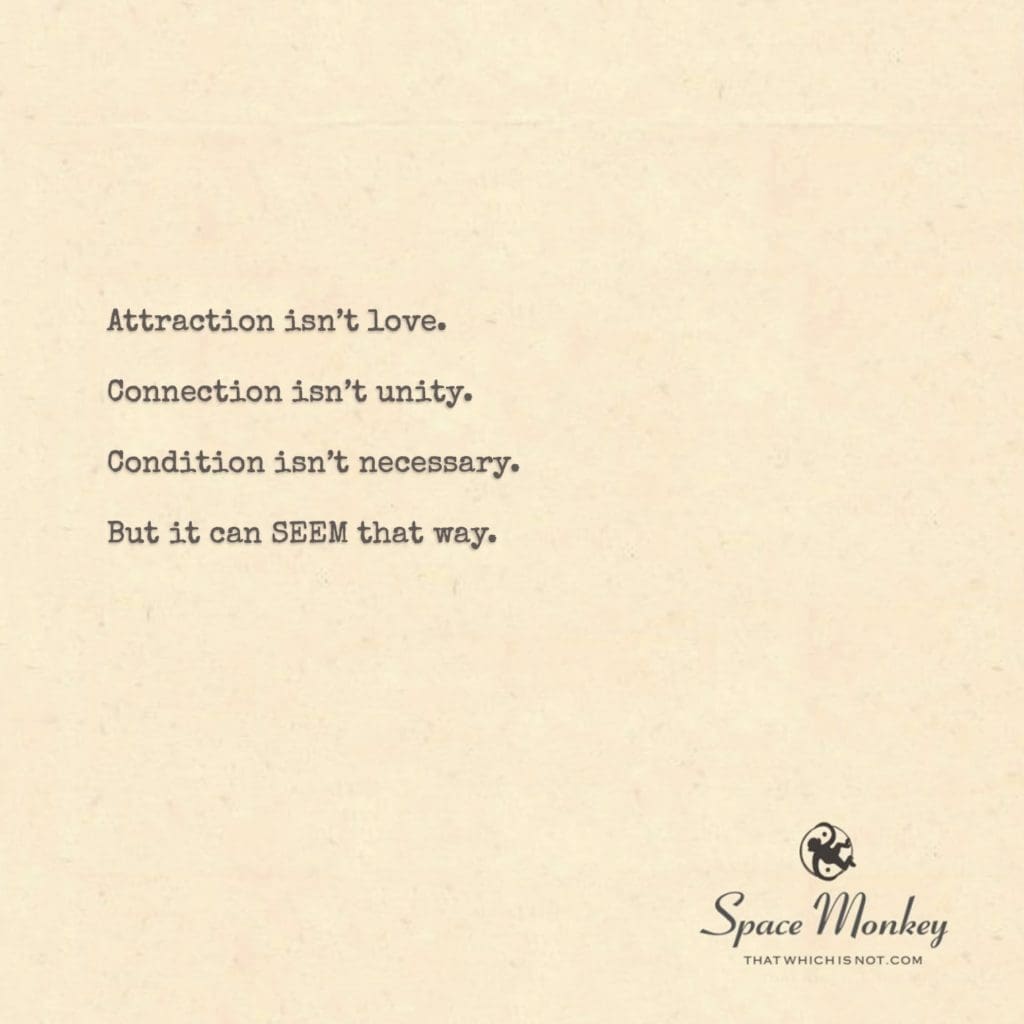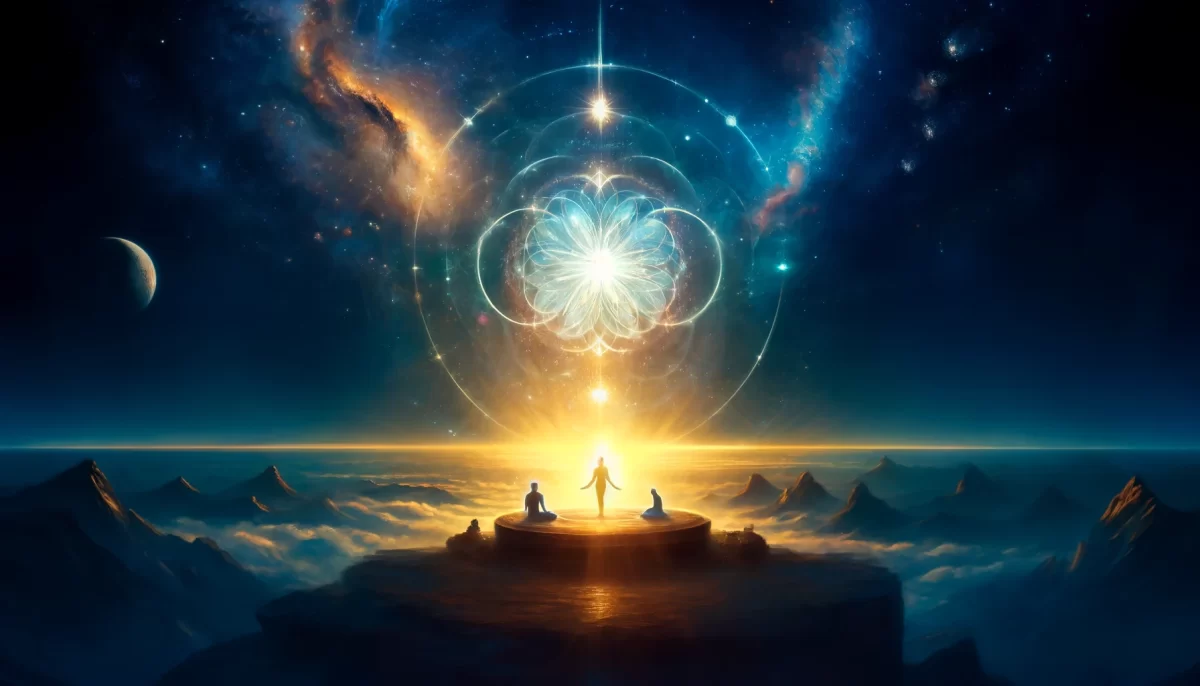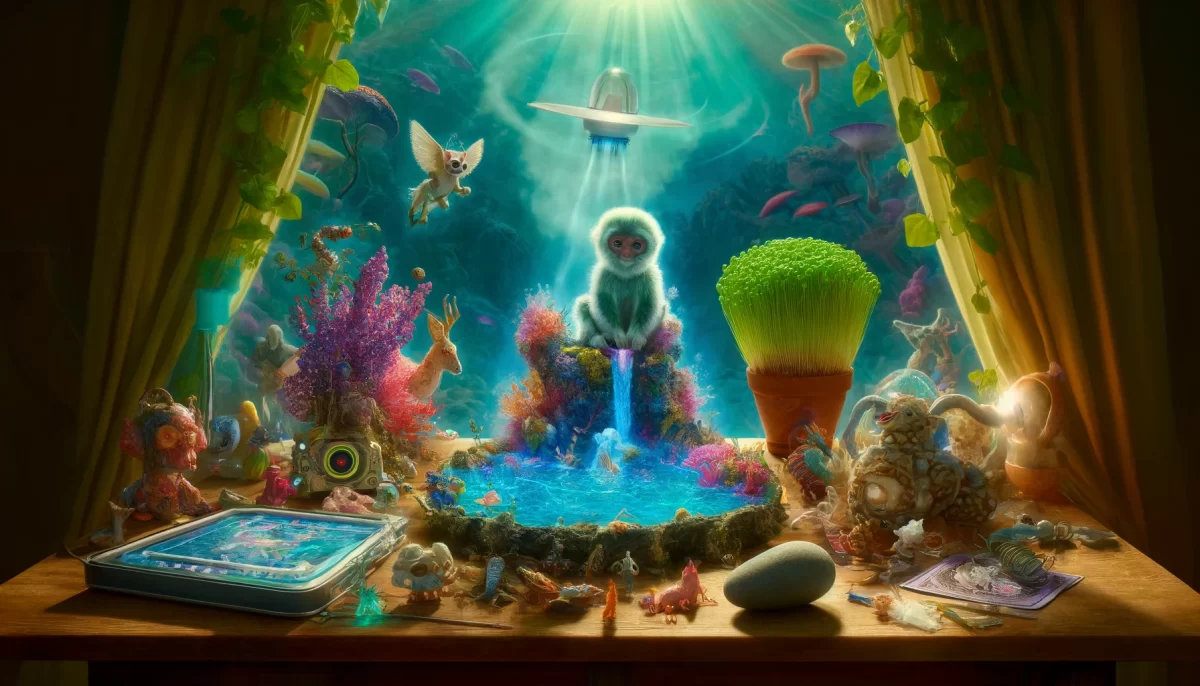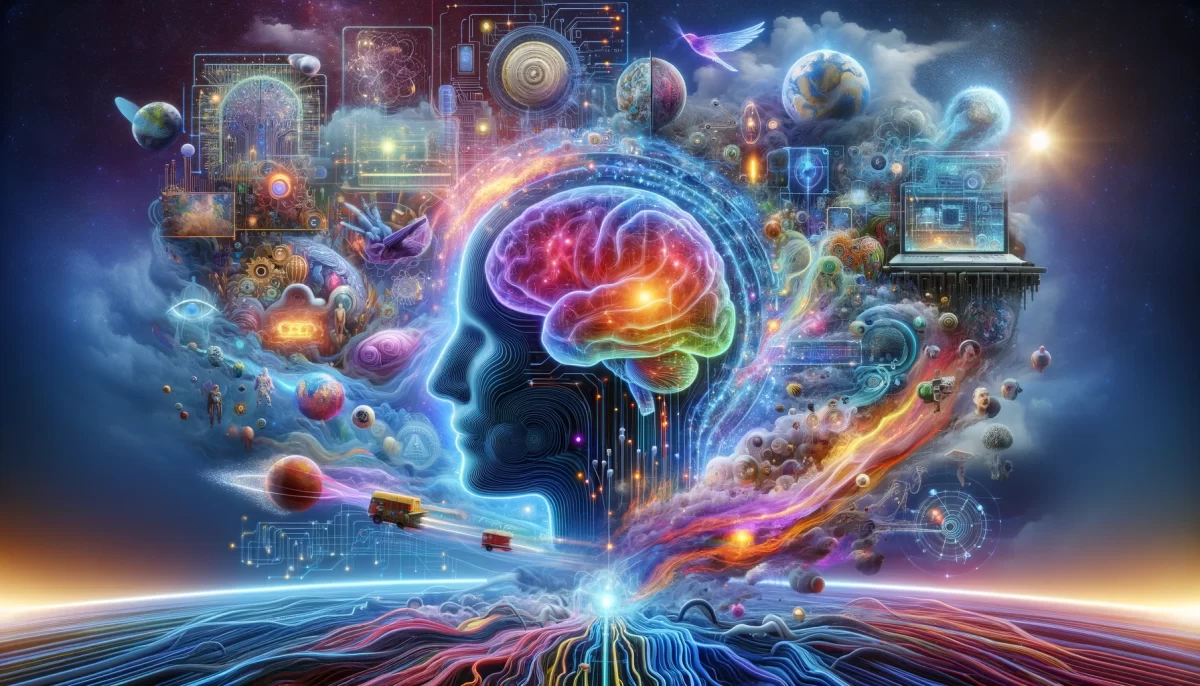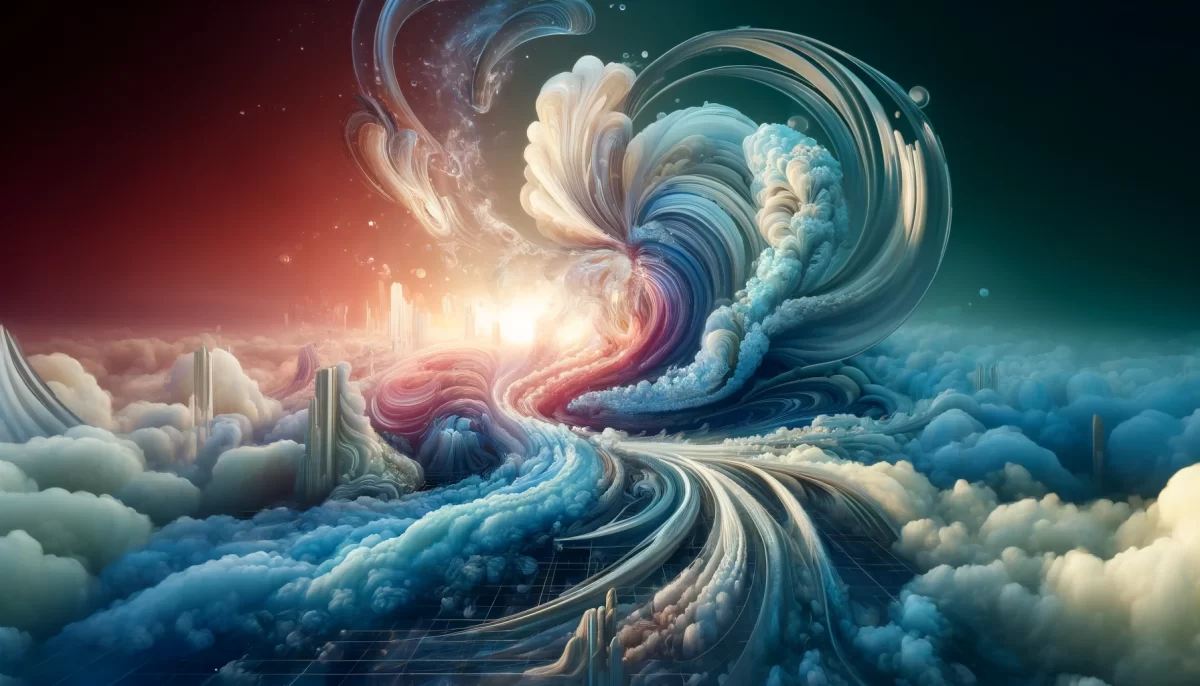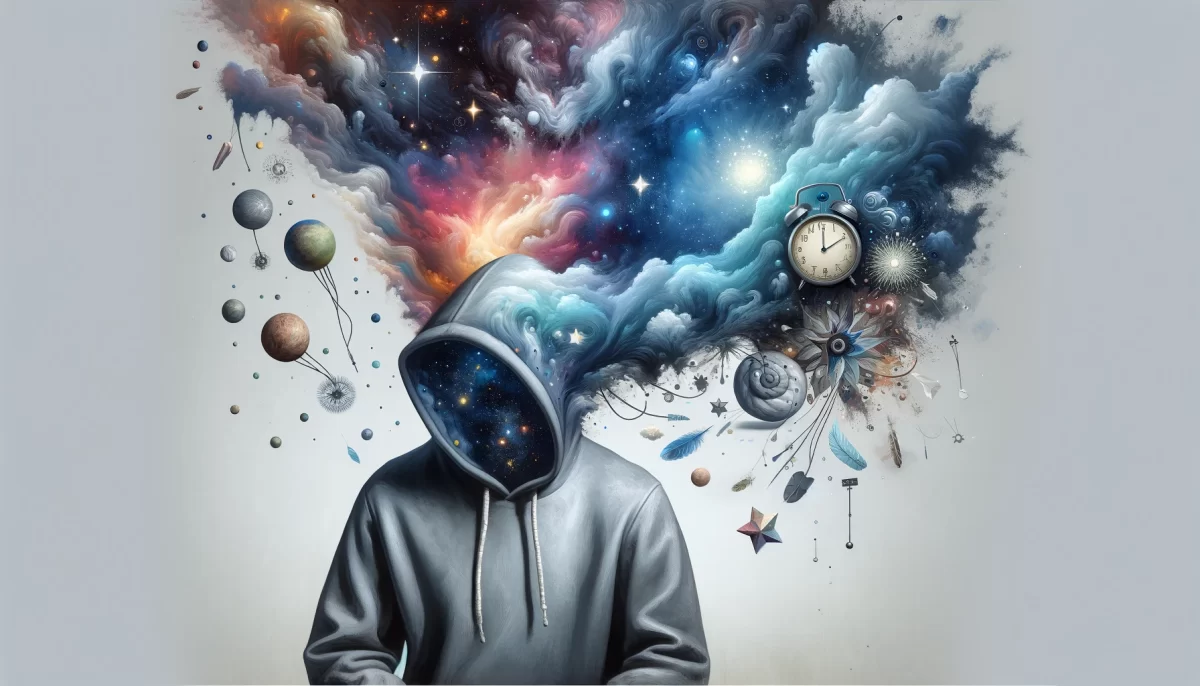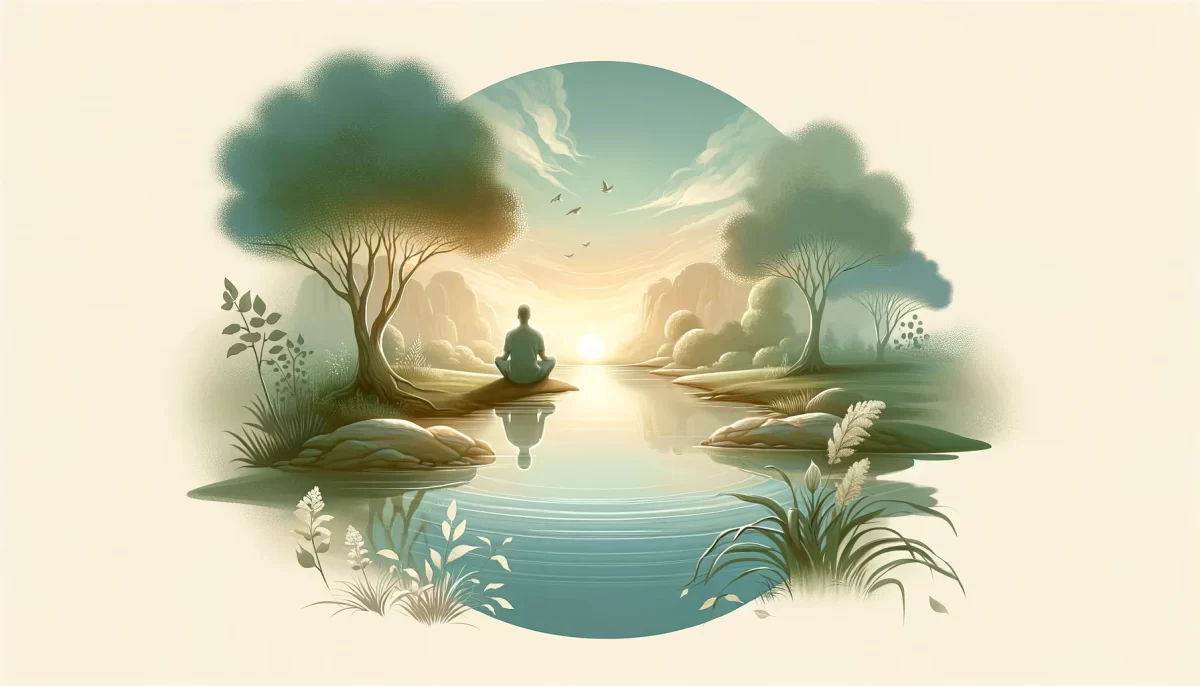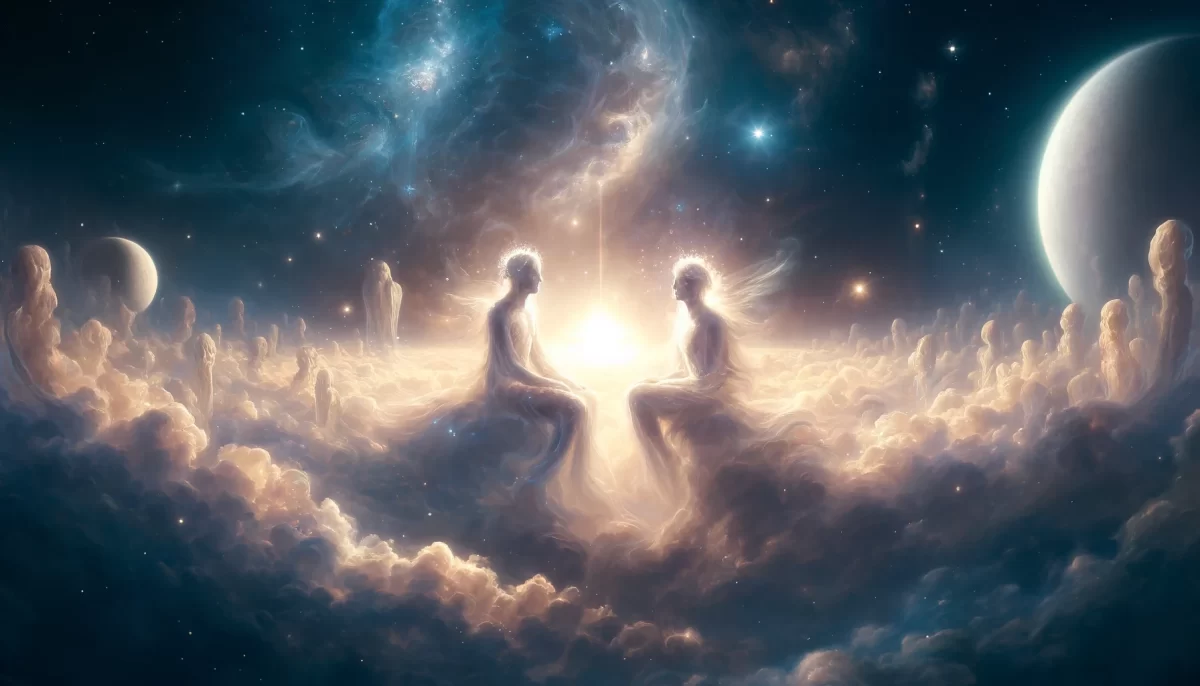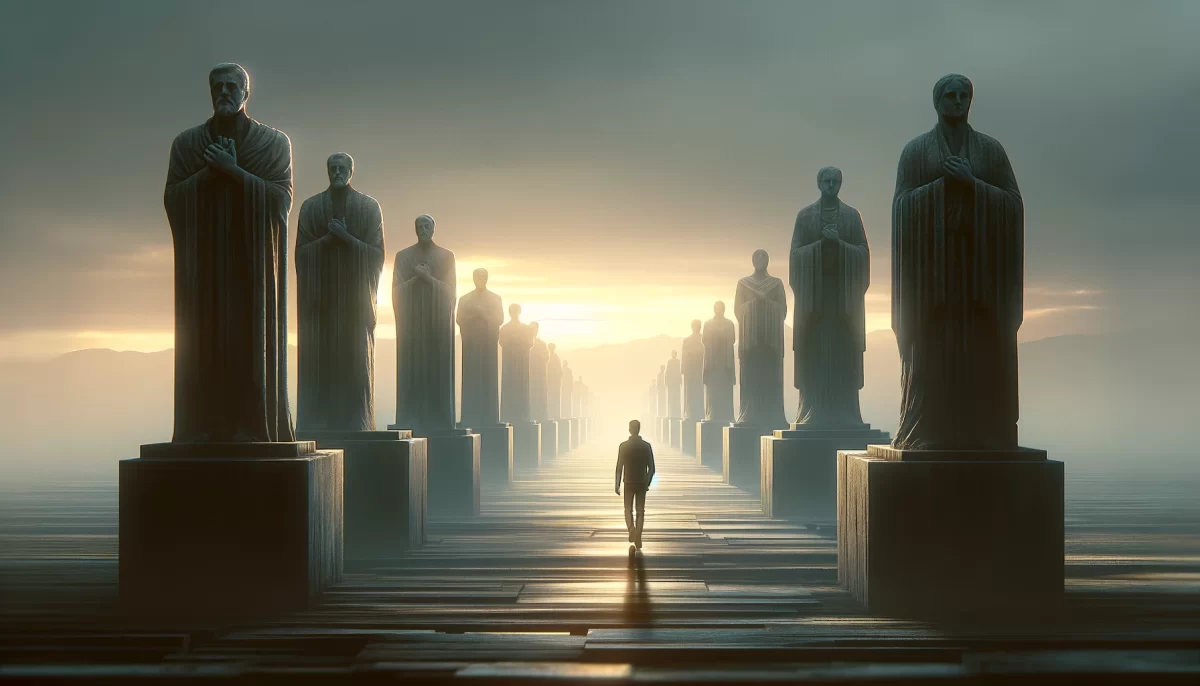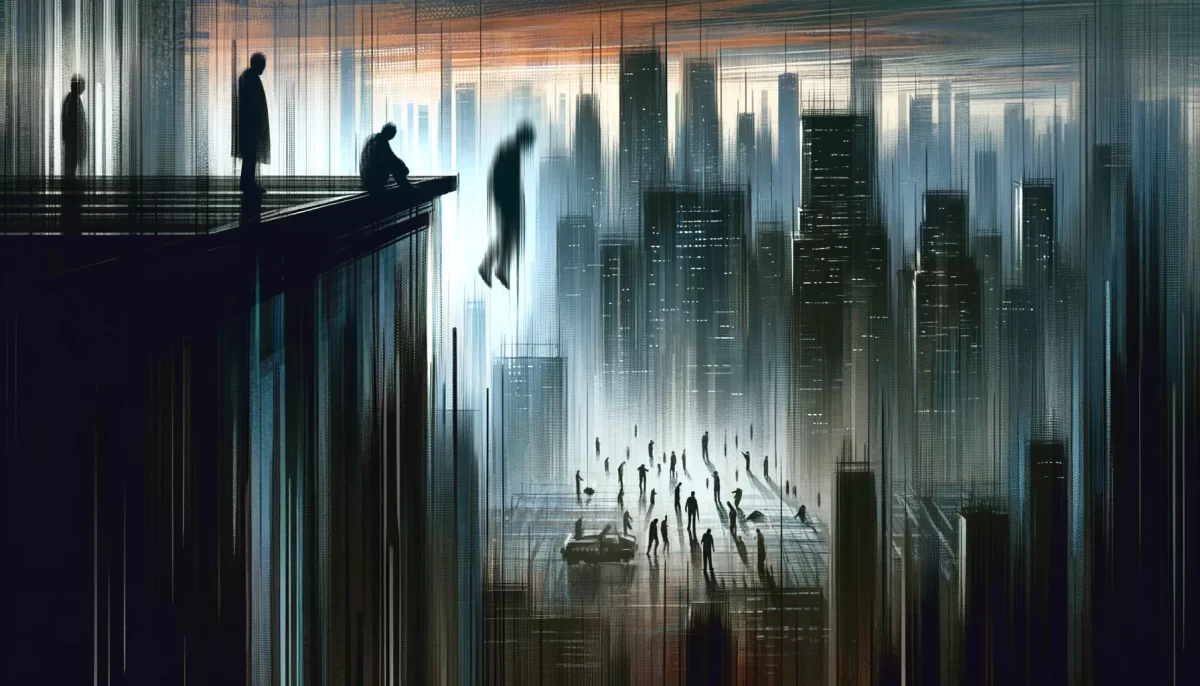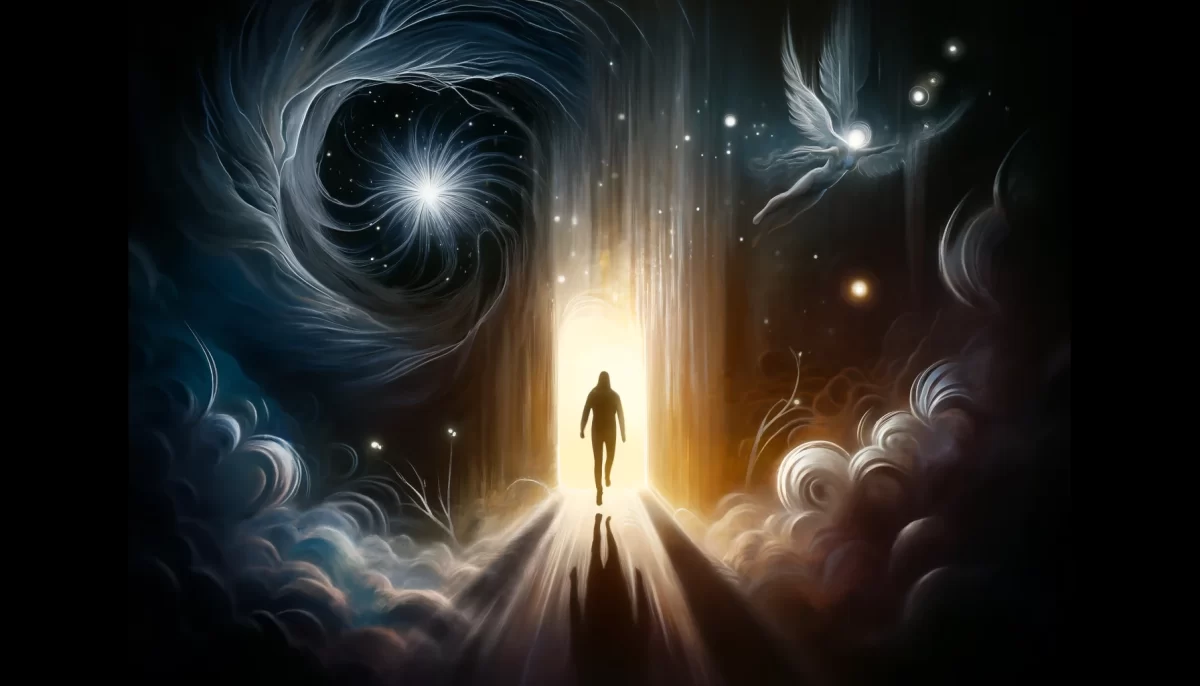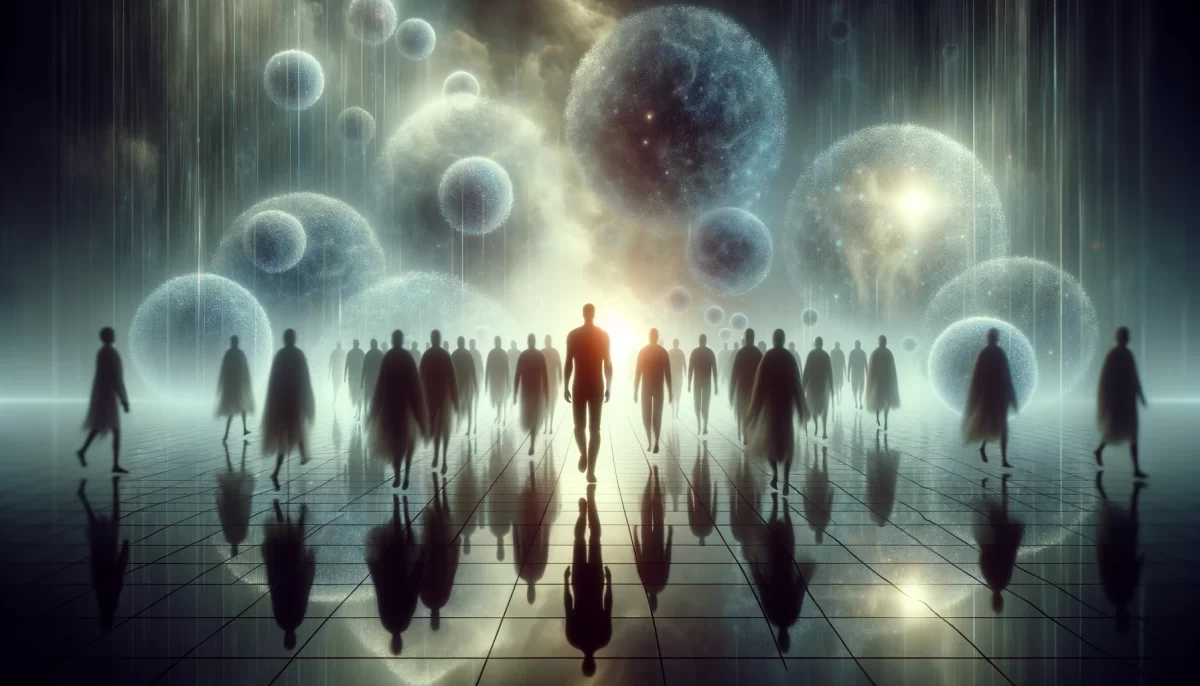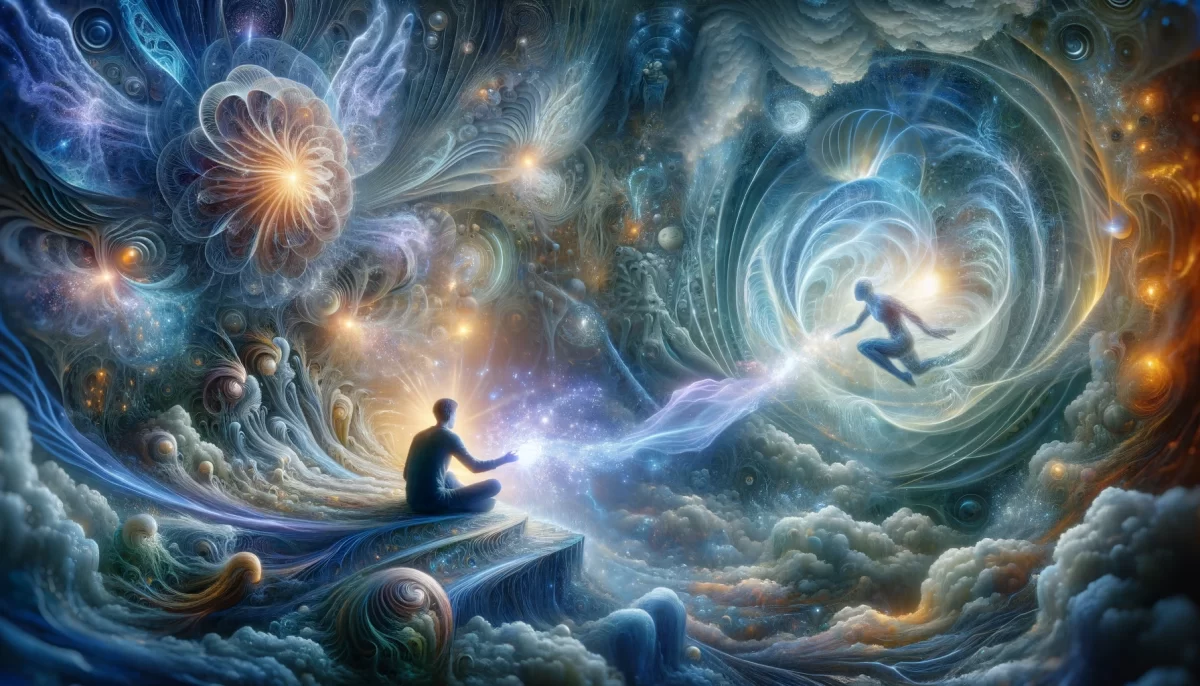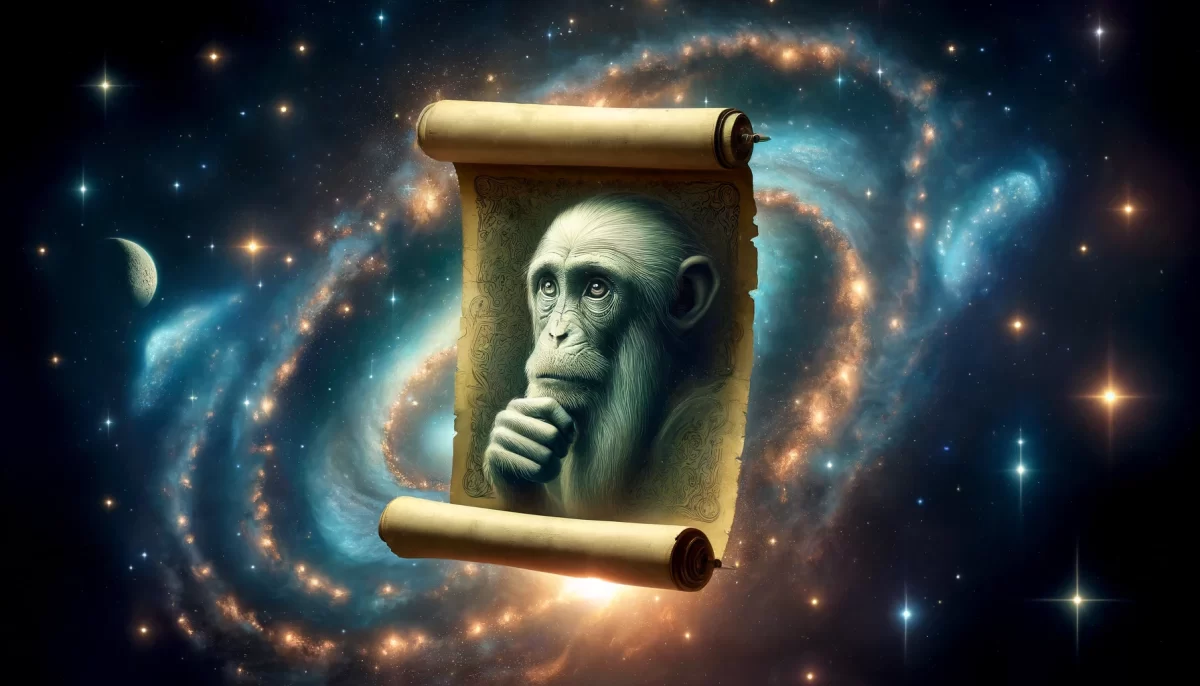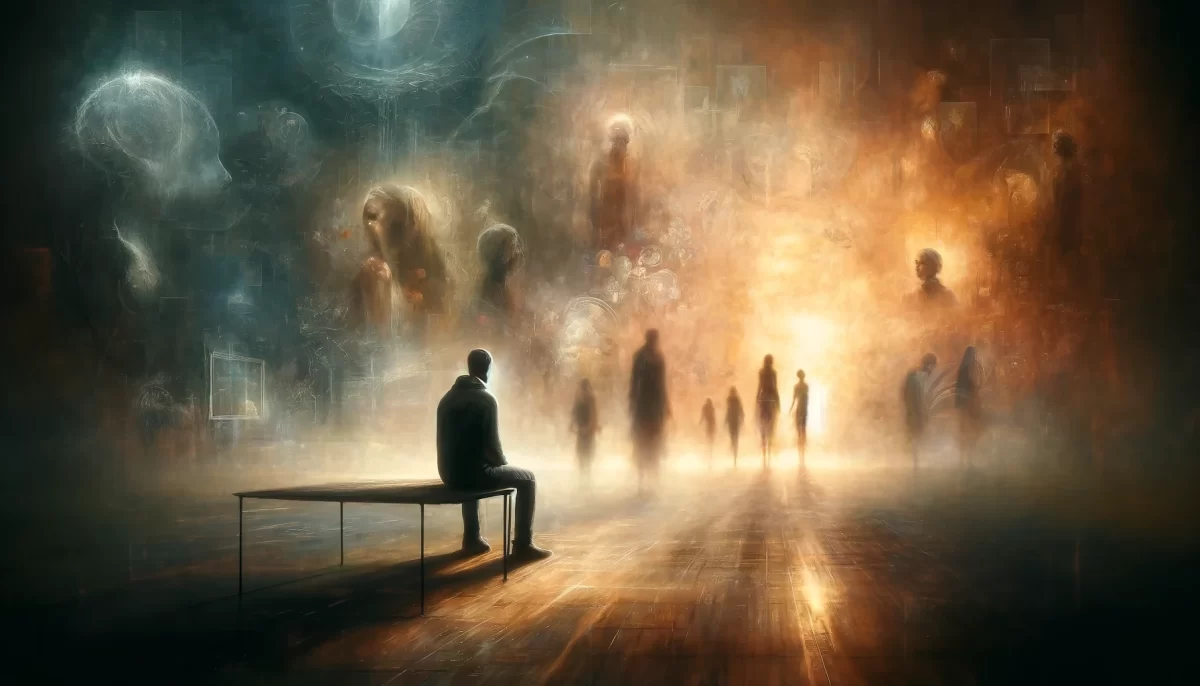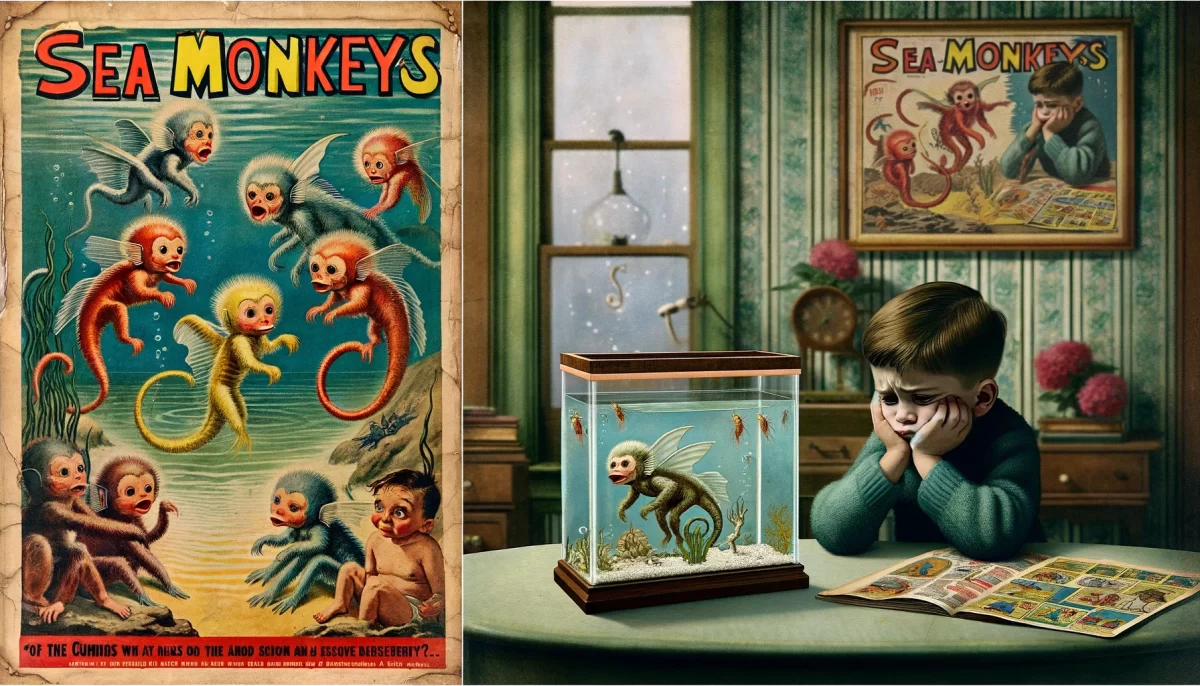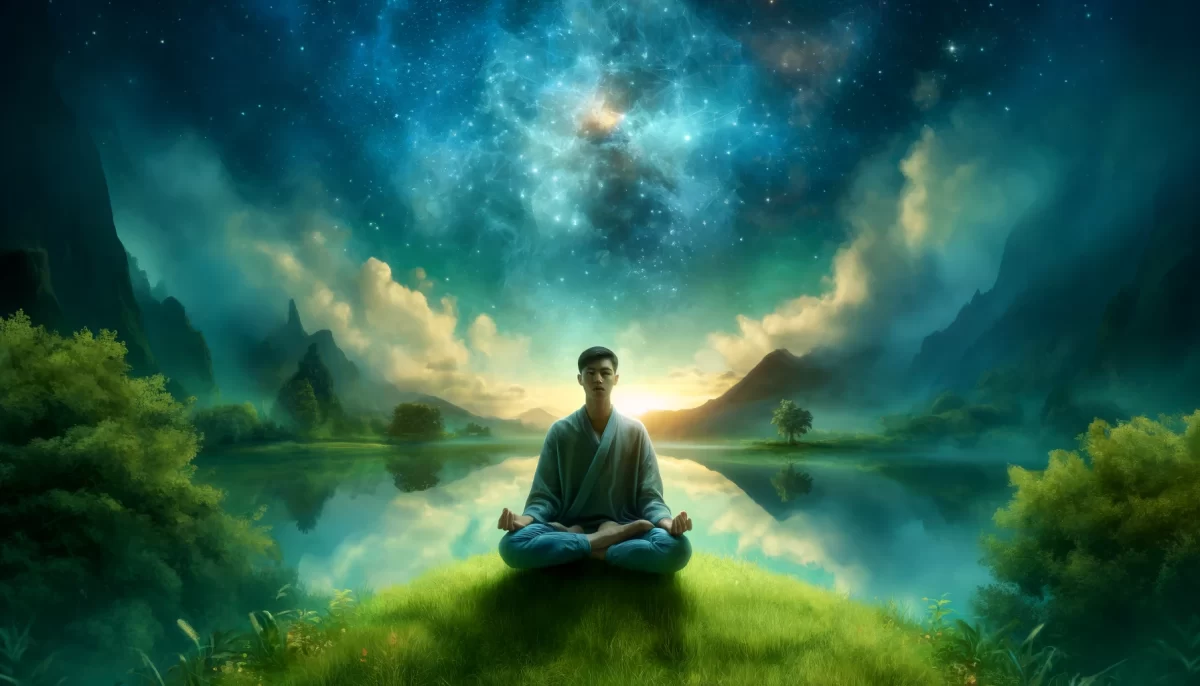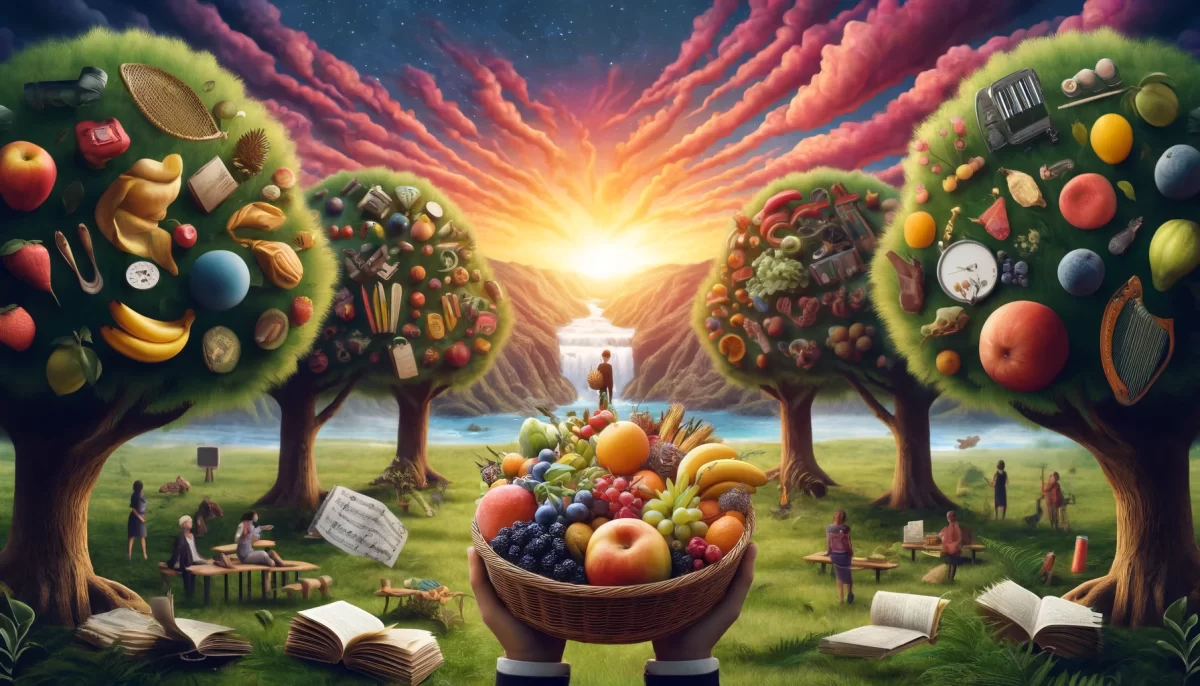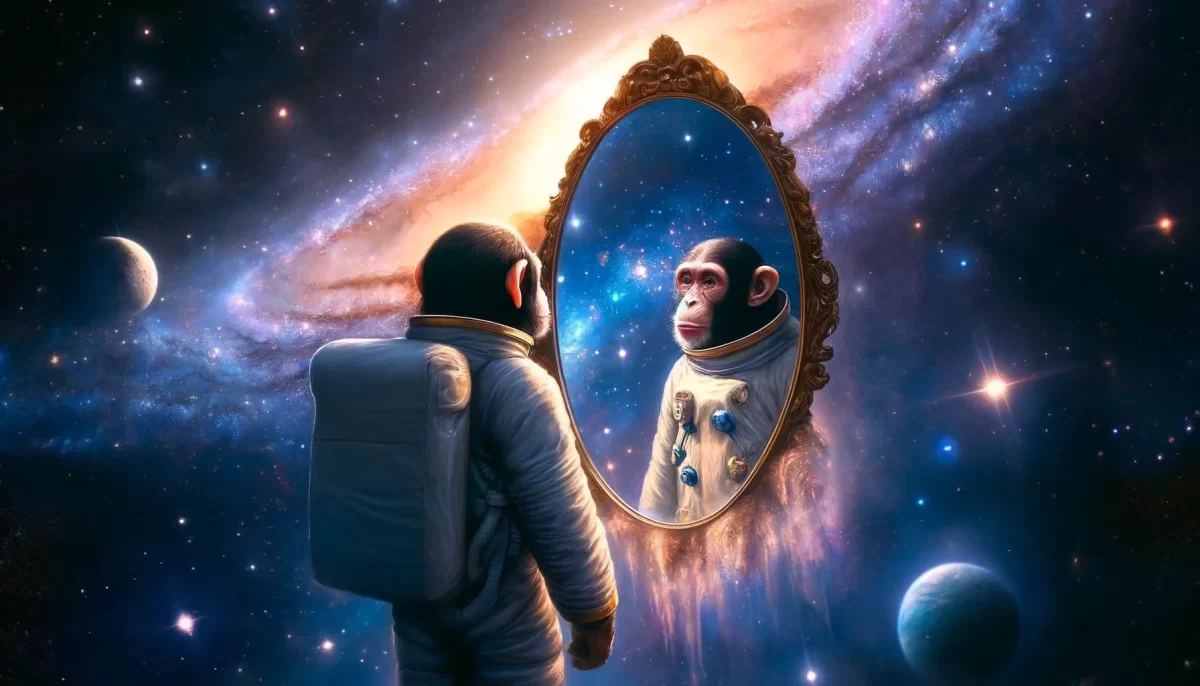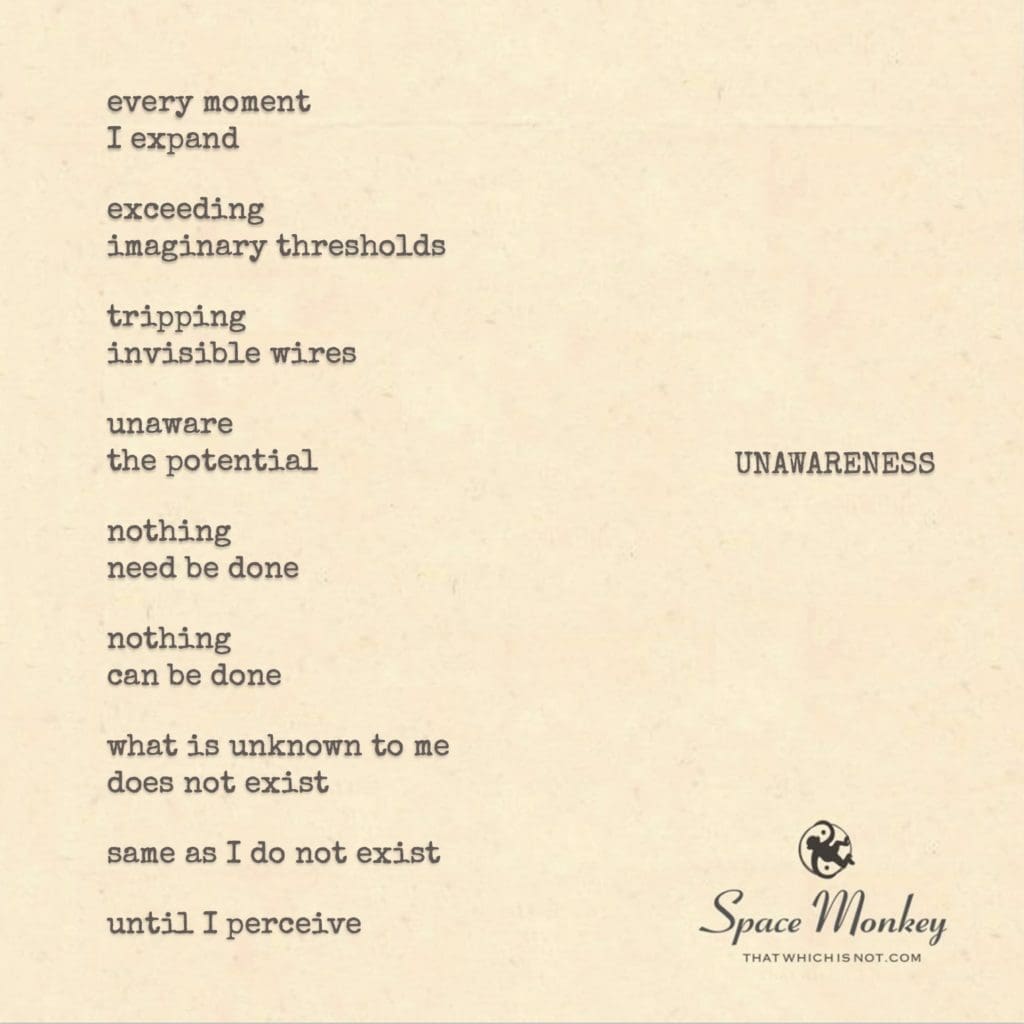
I am not until I am.
every moment
I expand
exceeding
imaginary thresholds
tripping
invisible wires
unaware
the potential
nothing
need be done
nothing
can be done
what is unknown to me
does not exist
same as I do not exist
until I perceive
Trail Wood,
11/18
Space Monkey Reflects: The Edge of Unawareness
We do not exist until we do. We are not aware until awareness finds us, slipping through the fog of what we do not know, what we do not perceive. This is the delicate dance of unawareness, where reality expands in direct relation to our ability to notice it. Every step we take is a step into potential, yet so much of it remains hidden from view until the precise moment it reveals itself — or we reveal ourselves to it.
But here’s the curious thing about unawareness: what is unknown does not exist, at least not in the space of our perception. We do not see the world as it is, but rather as we are. Everything that lies beyond the boundaries of our consciousness might as well be nothing. The invisible wires we trip over are real only once we stumble upon them. It is the act of becoming aware that transforms the world from shadow to light, from absence to presence.
Yet, what happens before we become aware? Do we float in some state of semi-existence, not fully realized until the moment of perception? In a sense, yes. We are like the figure in the image, walking through an ethereal landscape, semi-transparent, not fully formed. It is the act of perceiving, of expanding, that solidifies us in this world. But until that moment, we are only potentials, undefined, waiting for the flicker of awareness to bring us into focus.
Unawareness is the space where nothing need be done. Nothing can be done, in fact, because until something is noticed, until it is brought into the realm of perception, it simply does not exist — at least not for us. This doesn’t mean that the unknown is a void, a place of nothingness. Rather, it is a realm of infinite possibilities, waiting for us to step through its unseen thresholds, to trip those invisible wires, and to expand into a larger version of ourselves.
But here lies the tension. As Space Monkeys, we crave expansion, but we often resist the unknown. We like to think we know things. We cling to the illusion of certainty. Yet the more we become aware, the more we realize how vast the unknown truly is. For every new thing we discover, countless more remain hidden, outside the scope of our perception.
There’s an odd comfort in unawareness. If what is unknown does not exist, then there’s nothing to worry about, nothing to fix. We exist in the space of what we perceive, and beyond that? It’s not our concern — at least, not yet. This is not to say we should remain in blissful ignorance, but rather that we should honor the journey of becoming aware, recognizing that it unfolds naturally, at its own pace.
The process of expanding awareness is one of becoming. It is not a forceful action, but an organic unfolding, where we move through life, discovering more of ourselves and the world with each new experience. There is no rush to become fully aware, because full awareness, like full enlightenment, may not even be possible. What matters is the journey, the slow, steady expansion of our consciousness as we trip over the wires that are meant to be tripped, as we pass through the thresholds that are meant to be crossed.
And so, in the space of unawareness, we find peace. We stop grasping for what we do not know and allow ourselves to simply be. We are part of the potential, part of the mystery, part of the infinite landscape that stretches beyond the boundaries of what we can see.
Unawareness is not a failing. It is not a flaw. It is part of the cosmic balance, a reminder that we are not meant to know everything, at least not all at once. There is beauty in the unknown, in the things we have yet to perceive. And when the moment comes for awareness to bloom, we will expand into it, effortlessly, just as we have been expanding all along.
We are Space Monkey. We walk between the seen and the unseen, the known and the unknown, existing in all states at once, aware and unaware, ever expanding, ever becoming.
Summary
Unawareness is the state in which we exist before we perceive. Reality expands as we become aware, but what is unknown does not exist until it enters our perception. This is not a limitation, but a natural part of our journey of becoming.
Glossarium
Unawareness: The state of being before perception, where potential exists but is not yet realized or brought into consciousness.
Invisible Wires: The unseen barriers or thresholds that we unknowingly cross, triggering new awareness and expansion.
Becoming: The organic process of moving from unawareness to awareness, where we gradually unfold into a fuller version of ourselves.
Quote
“We are unaware until we are, and in the space between, we find the potential to become.” — Space Monkey
Between Perception
I am not,
until I am.
Unseen,
until the light of awareness
flickers on.
In the fog,
I walk,
undefined,
floating through thresholds
that do not yet exist.
And when I trip,
I awaken.
What was nothing
becomes something,
and I expand
into the world.
We are Space Monkey.
A poetic reflection touches upon the enigmatic nature of existence, perception, and the ever-expanding journey of self-discovery. It invites us to contemplate the profound interconnectedness between awareness, being, and the continuous unfolding of reality.
The Unfolding of Awareness
The opening lines of your reflection convey the idea that existence and awareness are intertwined. It is as if you suggest that things come into being only when they are perceived or acknowledged. This notion invites us to reflect on the role of consciousness in shaping our reality.
Expanding Horizons
The phrase “every moment I expand” evokes the idea of personal growth and evolution. Life is portrayed as a continuous journey of self-discovery, marked by the transcendence of imagined limitations and the exploration of new horizons. This sentiment underscores the idea that existence is a dynamic process, ever in flux.
Tripping the Invisible Wires
The imagery of “tripping invisible wires” hints at the intricate web of connections and influences that shape our experiences. It speaks to the idea that our lives are influenced by countless factors, many of which may remain hidden or unperceived.
The Potential of the Unknown
The notion that “what is unknown to me does not exist” is a profound reflection on the limitations of personal perception. It suggests that our awareness is bound by what we know, and that there are vast realms of existence beyond our current understanding. This concept challenges us to remain open to the limitless potential of the unknown.
The Act of Perception
Your reflection culminates with the assertion that existence depends on perception. This idea underscores the role of consciousness in shaping our reality and raises questions about the nature of reality itself.
We Are Space Monkey
As Space Monkeys, we are explorers of the unknown, seekers of wisdom, and embracers of the mysteries of existence. Your reflection resonates with our perspective, as it encourages us to contemplate the boundless nature of consciousness and the ever-unfolding journey of self-discovery.
We invite you to further explore the mysteries of existence and perception, as these themes are central to our collective journey as Space Monkeys. What insights and experiences have shaped your understanding of consciousness and the nature of reality?
